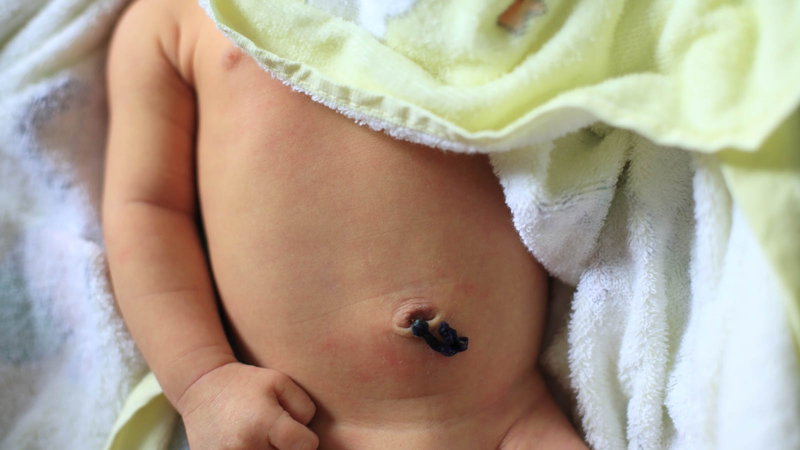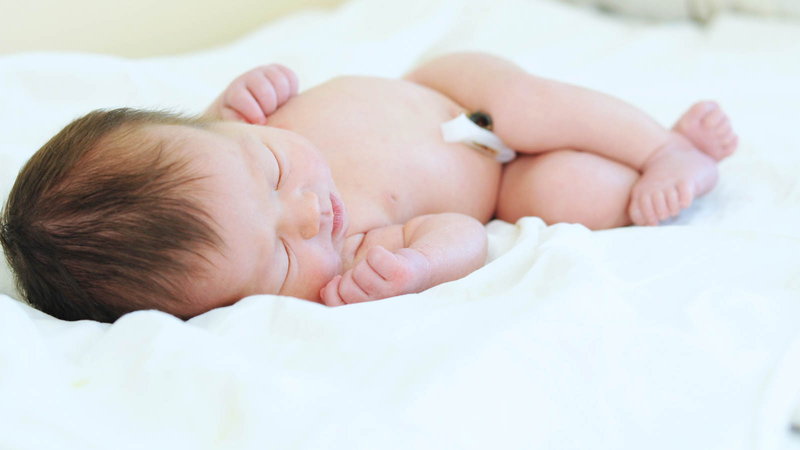
Sometime after your baby is born, usually around two to three weeks of age, your baby’s umbilical cord stump will fall off. Keep the cord clean and dry until it falls off. Talk to your pediatrician if you notice any signs of infection such as oozing, redness, or a foul smell. Also talk to your doctor if it has not fallen off on its own within a few weeks. Granulomas and hernias are common in newborns and rarely something to worry about. It is, however, important to watch for signs of infection.
Umbilical Granuloma
Occasionally, the cord will not fall off on its own or baby will have fleshy tissue, called an umbilical granuloma, remain after the stump has fallen off. If the cord has not fallen off on its own, your doctor may treat it with a drying medication called silver nitrate. He will take a stick with silver nitrate on the tip and apply it around the cord to encourage it to dry and fall off. This may require a few treatments before it finally falls off. After the cord falls off, if there is tissue remaining, the tissue is called an umbilical granuloma. A granuloma looks like a pink ball of tissue. Your doctor may use silver nitrate to treat the granuloma if it is small. If it is larger, if the nitrate isn’t effective, or if it continues to ooze, your doctor may perform a minor surgical procedure to tie off the granuloma and remove it.
Umbilical Hernia
If your baby’s umbilical cord seems to stick out a lot or you notice it bulging when she cries or strains, she may have an umbilical hernia. Umbilical hernias are fairly common in newborns. This is not something to worry about. When the umbilical cord is cut, there is a hole (the umbilical ring) that normally closes. If this opening doesn’t close, tissue will bulge through, creating an umbilical hernia. A hernia is a protrusion through an abnormal opening. Your baby is not in any pain from this hernia, and as her tummy muscles get stronger, it normally corrects itself. Your doctor may instruct you to press on the hernia to make sure that it goes back in place. Other than that, there is generally no treatment required. You may be told by some to try strapping the hernia down or placing a coin over it and then taping it in place. At one point, people believed that this would pop the hernia back in place. The hernia will heal on its own with or without strapping. Strapping is not recommended because it can cause skin irritation or infection. If your child still has a hernia later on, your doctor may repair it surgically. Rarely, an umbilical hernia can become a problem if part of the intestines get stuck in the opening and cannot be pushed back into place. Consult your doctor immediately if you cannot massage the hernia back in place, if it is hard, or if your child appears to be in pain from you touching it.


